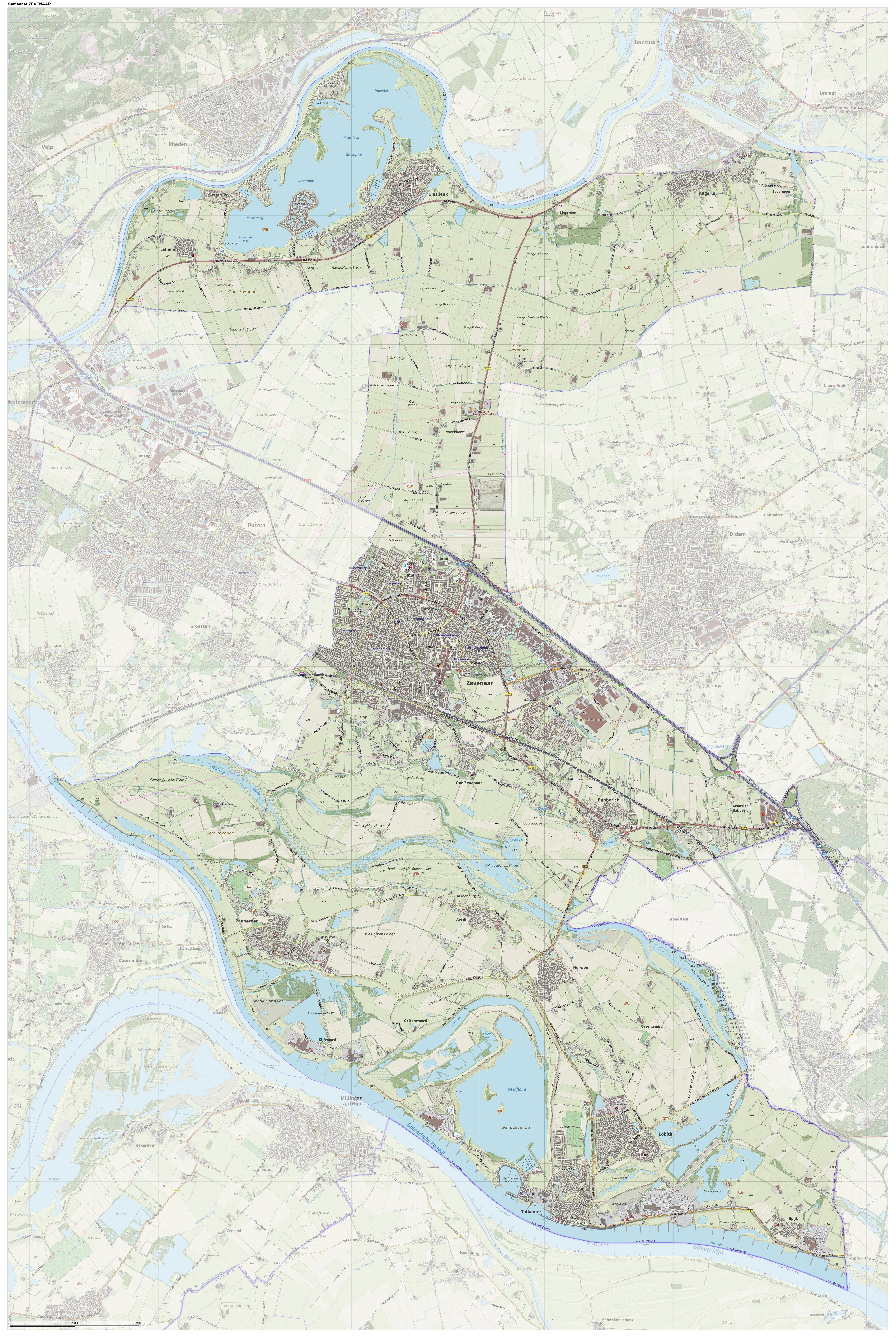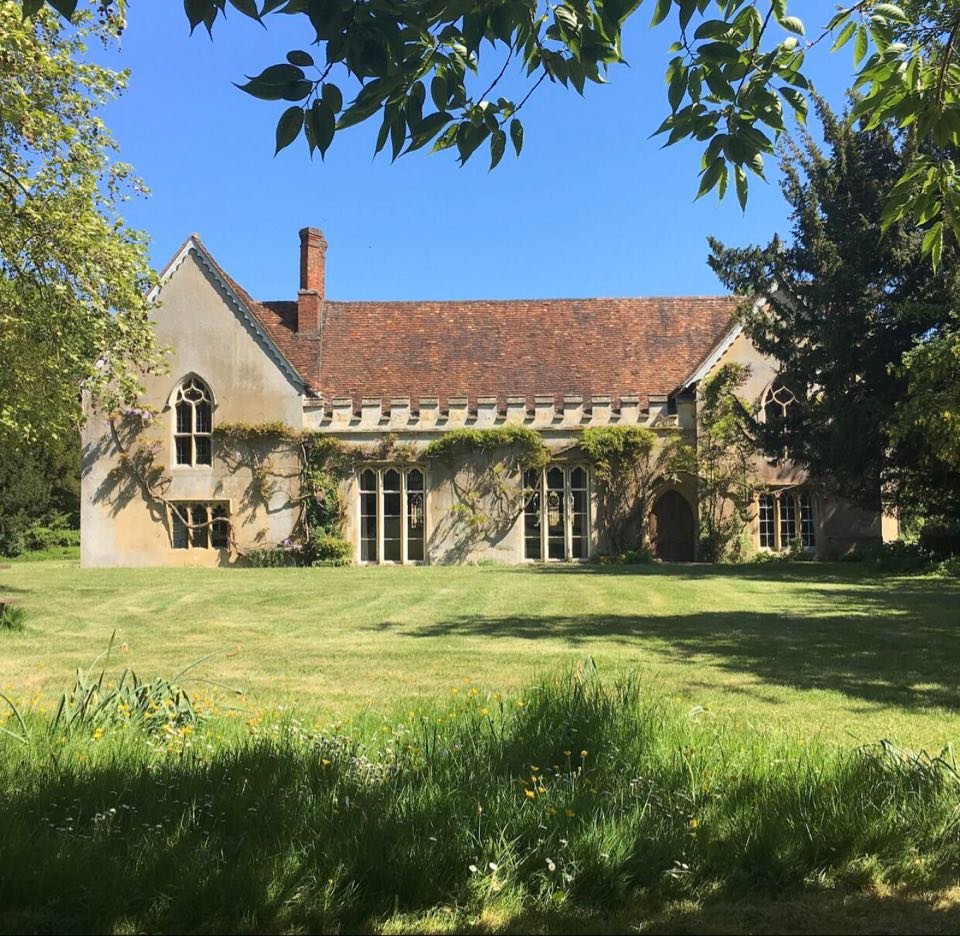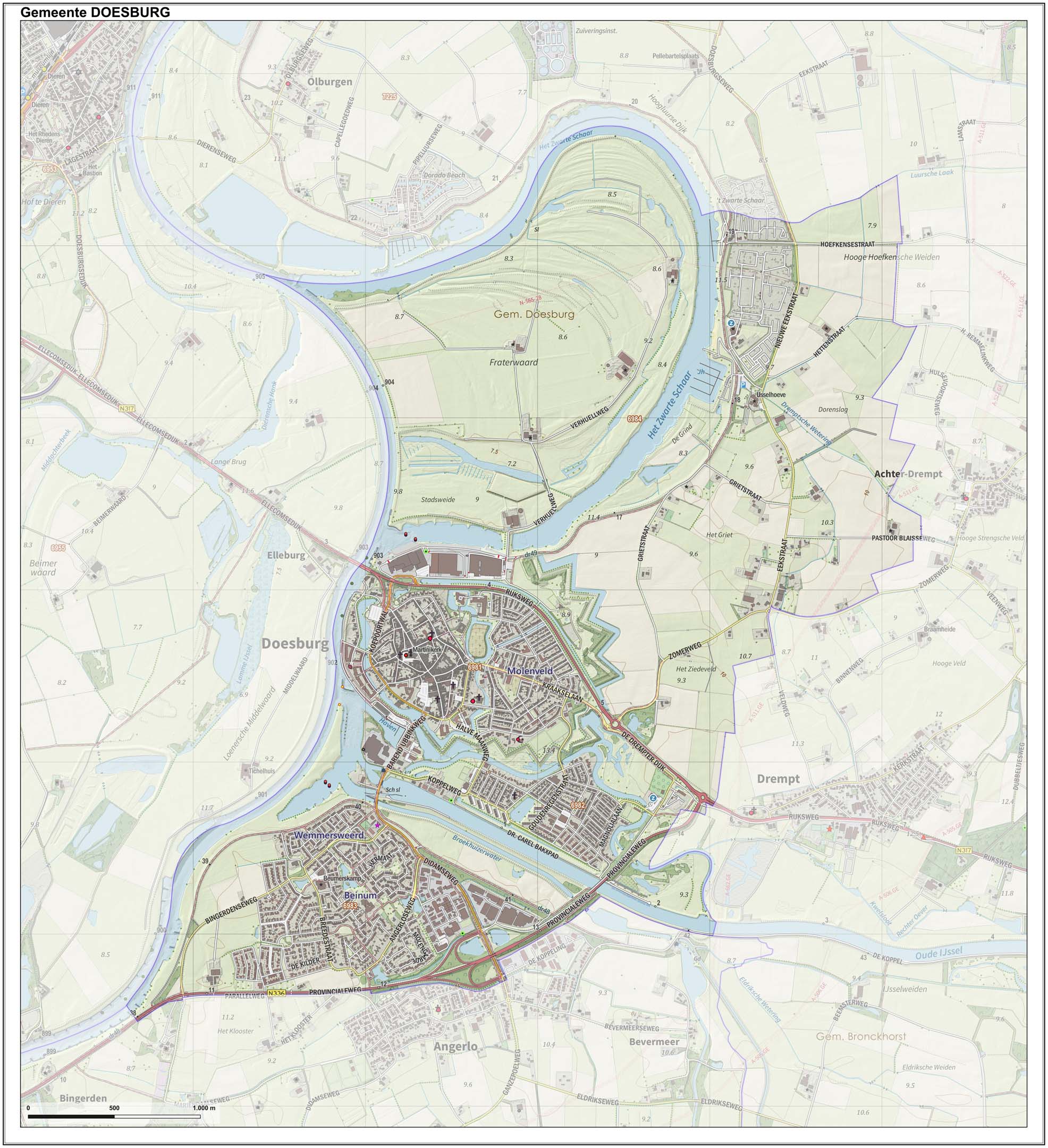|
Angerlo
Angerlo is a village in the municipality of Zevenaar, in the eastern Netherlands. It is located about 2 km south of Doesburg. Until 1 January 2005, Angerlo was an independent municipality, with a population of about 5,000. This municipality included the villages of Bahr, Giesbeek and Lathum, and the hamlets of Bevermeer and Bingerden. History The village was first mentioned in 1025 as Angarlo, and means "forest near grassland". Angerlo developed as a linear settlement on a river dune. Parts of the Dutch Reformed Church date from the 11th century. The western tower was replaced between 1766 and 1767, and was destroyed in 1945. It was rebuilt between 1948 and 1950. Huis Bingerden is a ''havezate A manor house was historically the main residence of the lord of the manor. The house formed the administrative centre of a manor in the European feudal system; within its great hall were held the lord's manorial courts, communal meals with ...'' which was first mention ... [...More Info...] [...Related Items...] OR: [Wikipedia] [Google] [Baidu] |
Zevenaar
Zevenaar () is a municipality and a city in the Gelderland province, in the eastern Netherlands near the border with Germany. Population centres * Angerlo *Babberich * Giesbeek *Lathum *Ooy * Oud-Zevenaar *Zevenaar History The earliest signs of human activity are remnants of a 700 BC settlement found near present-day Zevenaar. In 1049, Emperor Hendrik III donated a large amount of land to five warlords of which the leader was named Bartholomeus II of Sevenaer. They founded a castle to protect the old Roman settlements from the Germans. In 1355 Sevenaer passed from the control of the county/Duchy of Guelders (to which the modern Dutch province of Gelderland refers) to the Duchy of Cleves (Cleveland). In 1487, the duke of Cleves gave Sevenaer city rights. Sevenaer was an important strategic point –this border area between Gelderland and Cleveland, was the border between the regions that would, over the centuries, be controlled from different centers of power – the modern st ... [...More Info...] [...Related Items...] OR: [Wikipedia] [Google] [Baidu] |
Gelderland
Gelderland (), also known as Guelders () in English, is a province of the Netherlands, occupying the centre-east of the country. With a total area of of which is water, it is the largest province of the Netherlands by land area, and second by total area. Gelderland shares borders with six other provinces (Flevoland, Limburg, North Brabant, Overijssel, South Holland and Utrecht) and the German state of North Rhine-Westphalia. The capital is Arnhem (pop. 159,265); however, Nijmegen (pop. 176,731) and Apeldoorn (pop. 162,445) are both larger municipalities. Other major regional centres in Gelderland are Ede, Doetinchem, Zutphen, Harderwijk, Tiel, Wageningen, Zevenaar, and Winterswijk. Gelderland had a population of 2,084,478 as of November 2019. It contains the Netherlands's largest forest region (the Veluwe), the Rhine and other major rivers, and a significant amount of orchards in the south ( Betuwe). History Historically, the province dates from states of t ... [...More Info...] [...Related Items...] OR: [Wikipedia] [Google] [Baidu] |
Village
A village is a clustered human settlement or community, larger than a hamlet but smaller than a town (although the word is often used to describe both hamlets and smaller towns), with a population typically ranging from a few hundred to a few thousand. Though villages are often located in rural areas, the term urban village is also applied to certain urban neighborhoods. Villages are normally permanent, with fixed dwellings; however, transient villages can occur. Further, the dwellings of a village are fairly close to one another, not scattered broadly over the landscape, as a dispersed settlement. In the past, villages were a usual form of community for societies that practice subsistence agriculture, and also for some non-agricultural societies. In Great Britain, a hamlet earned the right to be called a village when it built a church. [...More Info...] [...Related Items...] OR: [Wikipedia] [Google] [Baidu] |
Bahr, Netherlands
Bahr is a hamlet in the Dutch province of Gelderland.''VUGA's Alfabetische Plaatsnamengids van Nederland'' (13th edition), VUGA, 1997. It is located in the municipality Zevenaar, about 3 km southeast of Rheden.''ANWB Topografische Atlas Nederland'', Topografische Dienst and ANWB, 2005. The village was first mentioned in 1272 as de Bare. It may mean "barren land". It became part of Gelderland in 1735. The hamlet has no place name signs. In 1840, it was home to 144 people. Nowadays it consists of about 20 houses. According to the 19th-century historian A.J. van der Aa, it had about 170 inhabitants in the middle of the 19th century. The large castle "Bahr" was located here, until it was demolished after a siege in 1495. See also * Van Baer (family) The Van Baer family, also known as Van Baer van Lathum or Van Bahr Van Lathum, was a Middle Age noble family from Bahr and Lathum Lathum is a village in the municipality of Zevenaar in the province of Gelderland, the Netherlan ... [...More Info...] [...Related Items...] OR: [Wikipedia] [Google] [Baidu] |
Former Municipalities Of Gelderland
A former is an object, such as a template, gauge or cutting die, which is used to form something such as a boat's hull. Typically, a former gives shape to a structure that may have complex curvature. A former may become an integral part of the finished structure, as in an aircraft fuselage, or it may be removable, being using in the construction process and then discarded or re-used. Aircraft formers Formers are used in the construction of aircraft fuselage, of which a typical fuselage has a series from the nose to the empennage, typically perpendicular to the longitudinal axis of the aircraft. The primary purpose of formers is to establish the shape of the fuselage and reduce the column length of stringers to prevent instability. Formers are typically attached to longerons, which support the skin of the aircraft. The "former-and-longeron" technique (also called stations and stringers) was adopted from boat construction, and was typical of light aircraft built until the a ... [...More Info...] [...Related Items...] OR: [Wikipedia] [Google] [Baidu] |
Municipalities Of The Netherlands Disestablished In 2005
A municipality is usually a single administrative division having corporate status and powers of self-government or jurisdiction as granted by national and regional laws to which it is subordinate. The term ''municipality'' may also mean the governing body of a given municipality. A municipality is a general-purpose administrative subdivision, as opposed to a special-purpose district. The term is derived from French and Latin . The English word ''municipality'' derives from the Latin social contract (derived from a word meaning "duty holders"), referring to the Latin communities that supplied Rome with troops in exchange for their own incorporation into the Roman state (granting Roman citizenship to the inhabitants) while permitting the communities to retain their own local governments (a limited autonomy). A municipality can be any political jurisdiction, from a sovereign state such as the Principality of Monaco, to a small village such as West Hampton Dunes, New York. T ... [...More Info...] [...Related Items...] OR: [Wikipedia] [Google] [Baidu] |
Havezate
A manor house was historically the main residence of the lord of the manor. The house formed the administrative centre of a manor in the European feudal system; within its great hall were held the lord's manorial courts, communal meals with manorial tenants and great banquets. The term is today loosely applied to various country houses, frequently dating from the Late Middle Ages, which formerly housed the landed gentry. Manor houses were sometimes fortified, albeit not as fortified as castles, and were intended more for show than for defencibility. They existed in most European countries where feudalism was present. Function The lord of the manor may have held several properties within a county or, for example in the case of a feudal baron, spread across a kingdom, which he occupied only on occasional visits. Even so, the business of the manor was directed and controlled by regular manorial courts, which appointed manorial officials such as the bailiff, granted copyhold l ... [...More Info...] [...Related Items...] OR: [Wikipedia] [Google] [Baidu] |
Linear Settlement
A linear settlement is a (normally small to medium-sized) settlement or group of buildings that is formed in a long line. Many of these settlements are formed along a transport route, such as a road, river, or canal. Others form due to physical restrictions, such as coastlines, mountains, hills or valleys. Linear settlements may have no obvious centre. In the case of settlements built along a route, the route predated the settlement, and then the settlement grew along the transport route. Often, it is only a single street with houses on either side of the road. Mileham, Norfolk, England is an example of this pattern. Later development may add side turnings and districts away from the original main street. Places such as Southport, England developed in this way. A linear settlement is in contrast with ribbon development, which is the outward spread of an existing town A town is a human settlement. Towns are generally larger than villages and smaller than city, cities, tho ... [...More Info...] [...Related Items...] OR: [Wikipedia] [Google] [Baidu] |
Lathum
Lathum is a village in the municipality of Zevenaar in the province of Gelderland, the Netherlands ) , anthem = ( en, "William of Nassau") , image_map = , map_caption = , subdivision_type = Sovereign state , subdivision_name = Kingdom of the Netherlands , established_title = Before independence , established_date = Spanish Netherl .... The village was first mentioned between 1294 and 1295 as Latheym, and means "settlement of Laeta (lit: serf)". Lathum developed near the Castle Bahr en Lathum. The castle was first mentioned in 1243, and destroyed in 1495. In the early 17th century, a manor house was built in its place. The Dutch Reformed Church probably started as a chapel. It was built in the late-15th century and has 14th century elements. In 1840, it was home to 242 people. In the 1990s, Riverparc was constructed on the location of the former brickworks. Gallery file:lathum1.jpg, Huize "Lathum" File:Grand Cafe Restaurant Rutgers at Rhederlaag waterbassin alo ... [...More Info...] [...Related Items...] OR: [Wikipedia] [Google] [Baidu] |
Giesbeek
Giesbeek is a village in the municipality of Zevenaar in the province of Gelderland, the Netherlands. The village was first mentioned between 1378 and 1379 to Ghisebeke. The etymology is unclear. In 1840, it was home to 399 people. The Roman Catholic St. Martinus Church was built in 1909 as a replacement of an 1834 church. The tower was destroyed in 1945, and initially not rebuilt. In 2010, a new tower was officially opened. The grist mill A gristmill (also: grist mill, corn mill, flour mill, feed mill or feedmill) grinds cereal grain into flour and Wheat middlings, middlings. The term can refer to either the Mill (grinding), grinding mechanism or the building that holds it. Grist i ... De Hoop was built in 1888. In 1964, it was decommissioned, and the interior and the artificial hill were removed. In 1979, it was bought by the municipality, restored in 1981, and once again grinding flour for bakeries. Gallery File:Giesbeek, dorpszicht foto4 2011-03-02 10.47.jpg, Village File ... [...More Info...] [...Related Items...] OR: [Wikipedia] [Google] [Baidu] |
Telephone Numbers In The Netherlands
Telephone numbers in the Netherlands are administered by the Ministry of Economic Affairs, Agriculture and Innovation of the Netherlands and may be grouped into three general categories: geographical numbers, non-geographical numbers, and numbers for public services. Geographical telephone numbers are sequences of 9 digits (0-9) and consist of an area code of two or three digits and a subscriber number of seven or six digits, respectively. When dialled within the country, the number must be prefixed with the trunk access code 0, identifying a destination telephone line in the Dutch telephone network. Non-geographical numbers have no fixed length, but also required the dialling of the trunk access code (0). They are used for mobile telephone networks and other designated service types, such as toll-free dialling, Internet access, voice over IP, restricted audiences, and information resources. In addition, special service numbers exist for emergency response, directory assistanc ... [...More Info...] [...Related Items...] OR: [Wikipedia] [Google] [Baidu] |
Doesburg
Doesburg () is a municipality and a city in the eastern Netherlands in the province of Gelderland. Doesburg received city rights in 1237 and had a population of in . The city is situated on the right bank of river IJssel, at the confluence of river Oude IJssel. The municipality of Doesburg is part of the Arnhem-Nijmegen agglomeration region. History Doesburg received city rights in 1237, this was one year later than the neighbouring town of Doetinchem. Because of its strategic position along the Oude IJssel and Gelderse IJssel, Doesburg has been an important fortified city for a long time. The fortification of the city made Doesburg an important economic and administrative city. The Martinikerk, the main church in Doesburg is 94 meters tall. For many reasons, many of which have to do with the IJssel decreasing in depth, the prosperity in Doesburg settled after the 15th century. Doesburg changed into a sleepy provincial town and so it would remain until after the second world ... [...More Info...] [...Related Items...] OR: [Wikipedia] [Google] [Baidu] |




